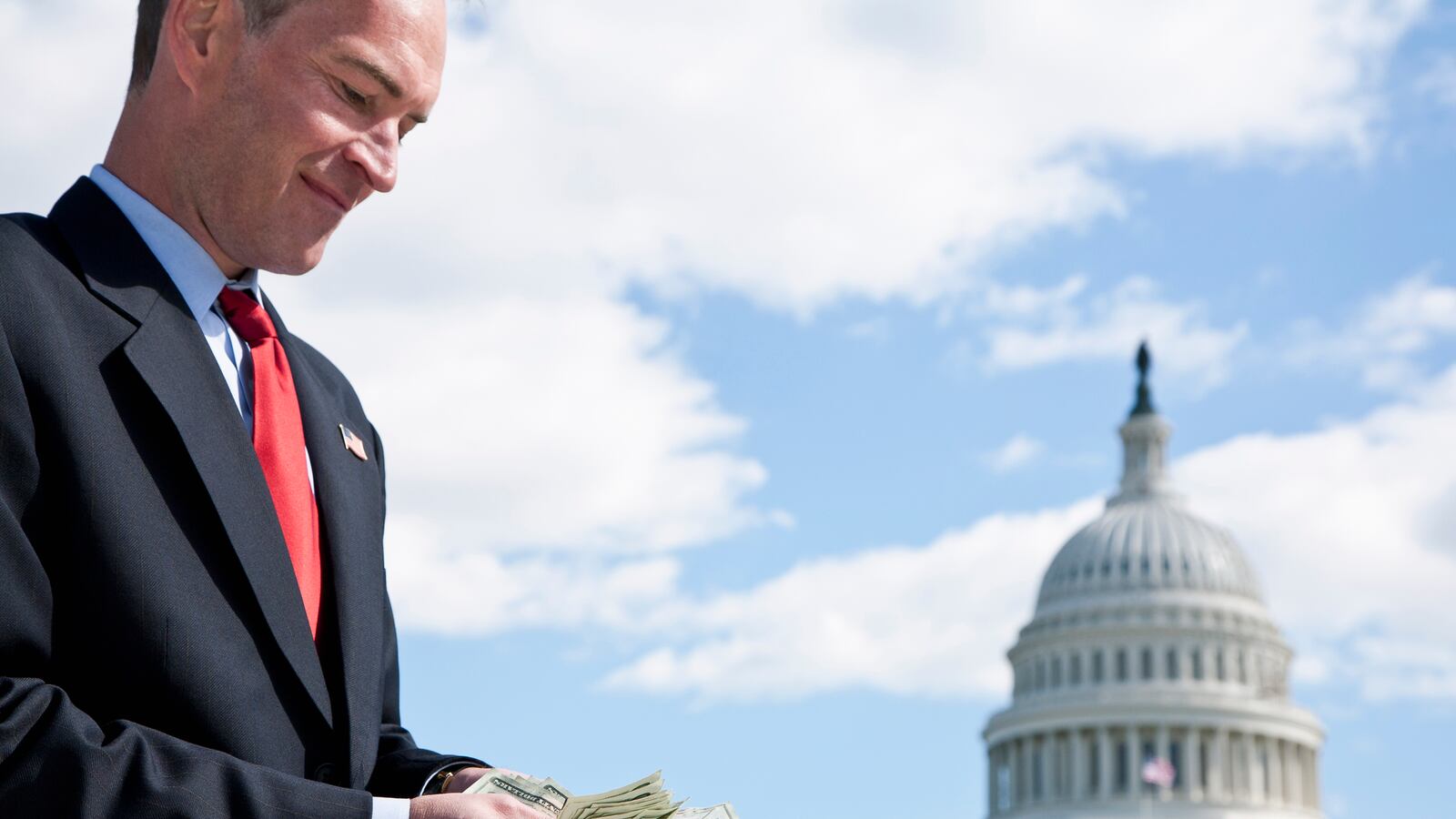
By Mark Koba
Despite the sequester—huge cutbacks in federal spending that were mandated by law in March—some high-level federal executives are scheduled to get millions of dollars in bonuses, unless there's a law to stop them.

According to a report released Friday by the Senate Subcommittee on Financial and Contracting Oversight, the bonuses must be paid under current congressional regulations, even with some $85 billion in government funding cuts in effect.
Sen. Claire McCaskill (D-MO), chairwoman of the subcommittee, has introduced legislation to prevent the bonuses from being handed out during the sequester. Sens. Tom Coburn (R-OK) and Ron Johnson (R-WIS) are co-sponsors of the legislation.
"The idea that some of the highest-paid federal government employees could be getting bonuses while others are being furloughed is outrageous," said McCaskill on her website. "This legislation will ensure that doesn't happen."
The bonuses would go to Senior Executive Service employees who meet certain performance criteria. The group makes up less than 1 percent of the federal workforce.
The SES was created in 1978 as part of a civil service reform act and is made up of executives who serve in positions just below presidential appointees. They oversee nearly 75 federal agencies.
According to the report, some $340 million in bonuses were paid out to SES members from 2008 to 2011. The bonuses came on top of annual salaries ranging from $119,000 to $179,000.
Bonuses for the vast majority of federal workers were frozen by President Obama in April because of the sequester.
In 2011, more than 6,300 cash bonuses were paid to SES members, for a total of $78 million. Among those receiving the rewards were the Nuclear Regulatory Commission, which paid more than $16,000 per worker. The Department of the Navy paid $13,000 per SES member in 2011, according to the report.
Singled out by the committee's study in handing out large bonuses was the General Services Administration, which helps manage and support the basic functioning of federal agencies. That includes finding office space, providing supplies, and transportation for workers.
The GSA spent some $1.1 million in bonuses in 2011, and each SES member received an average of 1.6 bonuses for the year. The GSA has come under scrutiny in the past for its bonuses and for staging a $835,000 training conference in Las Vegas that many criticized as a misuse of federal funds.
"Last year as part of a review of all agency operations, Acting Administrator Dan Tangherlini cut executive bonuses by 85 percent," said GSA spokesman Dan Cruz in an email.
"Additionally, the entire performance awards system has been reviewed, and the new leadership at GSA has worked to reform the system. As a result, GSA no longer has peer to peer awards. Under this Administration, GSA bonuses are coming down to their lowest levels in five years," Cruz wrote.
Cancel Bonuses, 'Lose Top Talent'
But there are some who say the bonuses are needed. Like the often heard refrain from Wall Street—that incentives are needed for recruiting and keeping talent—the president of the Senior Executives Association, a nonprofit group promoting better government, says the bonuses serve an important role.
"I don't even like to use the word ‘bonuses,’" said Carol Bonosaro. "Since 2004, when it started under the Bush administration, this money paid out to the workers is actually their raise. It's performance based and unless they meet certain criteria, the workers don't get the money."
"If we don't give people some incentive to work for the government we're going to lose top talent to the private sector, where they can make a lot more money," Bonosaro said. "These workers are underpaid as it is."
Before a 2011 directive to limit SES bonuses to no more than 5 percent of aggregate salary, federal spending on bonuses outpaced the growth of the SES, according to the Senate report. From 2008 to 2010, federal spending on SES bonuses increased by 7 percent.
By comparison, the total number of SES employees increased approximately 2 percent from 7,736 employees in 2008 to 7,905 in 2010. In 2011, the number of SES employees increased by 1.5 percent while the overall value of bonuses decreased by approximately 13 percent from 2010.
As for the proposed legislation to stop the payments, Bonosaro is clear about where she stands.
"It's not a good idea," said Bonosaro. "Good executives will be leaving, and the ones behind them will see no reason to stay."






